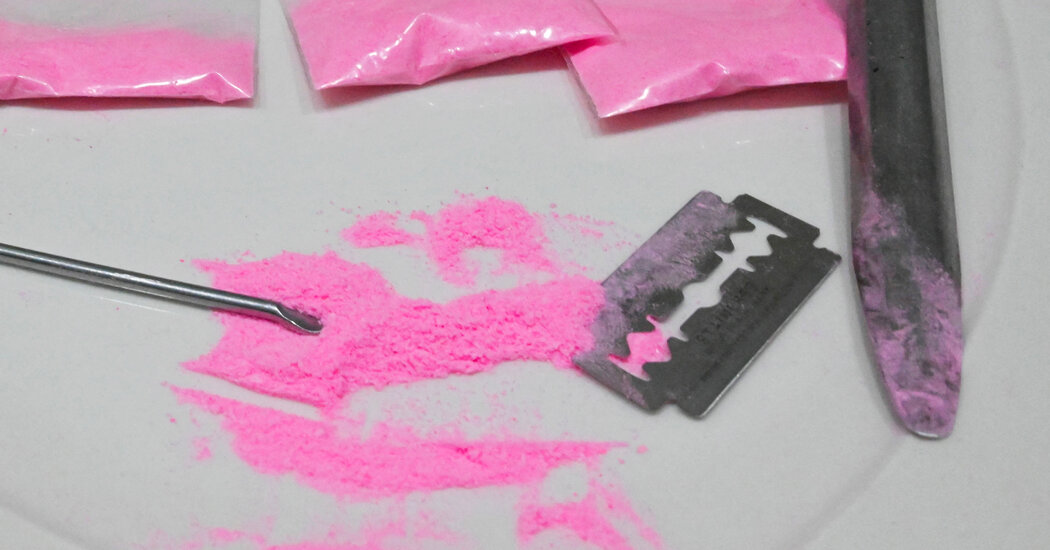The drug cocktail can contain ketamine, Ecstasy and meth — but rarely cocaine itself.
A powder called “pink cocaine,” made up of a revolving group of drugs, has become a dangerous and increasingly popular part of the club scene in U.S. cities, according to the Drug Enforcement Administration and epidemiologists who study recreational drug use.
Most samples of the concoction contain at least one stimulant drug and one depressant, experts said. Often, pink cocaine includes ketamine, a dissociative anesthetic with hallucinogenic effects, and other drugs like Ecstasy, methamphetamine, opioids and psychoactive substances such as bath salts.
“This concoction is usually very cheap, which attracts people to use it,” said Dr. Linda Cottler, an epidemiologist who studies substance abuse at the University of Florida.
The term “pink cocaine” is itself a misnomer, as the cocktail rarely contains cocaine, said Joseph Palamar, an associate professor at New York University Langone Health who researches party drugs.
Rather, the name likely comes from the fact that pink cocaine is sold in powder form and dyed pink with food coloring.
Also known as tusi, pink cocaine originated in Colombia and was named after the synthetic compound “2C-B,” a quasi psychedelic that was first synthesized by the drug pioneer Alexander Shulgin but rarely contains that substance either, experts said.
